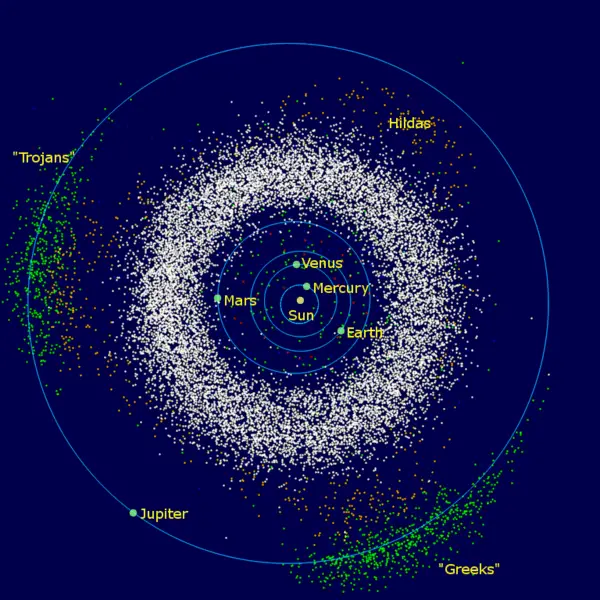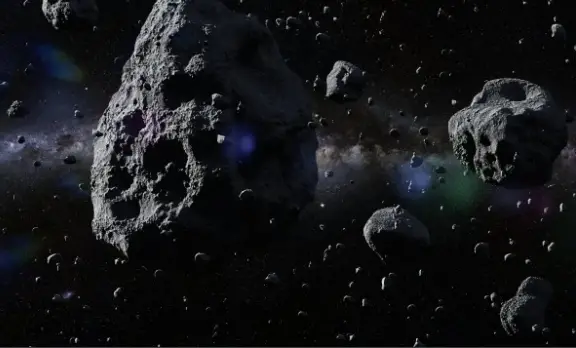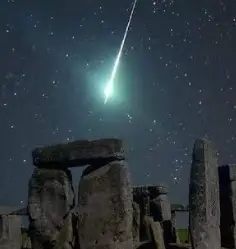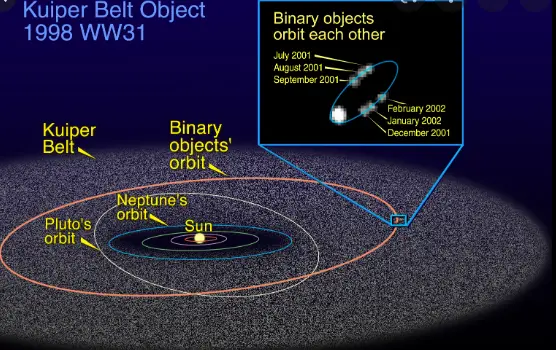
INTERESTING FACTS ABOUT THE ASTEROID BELT !!!
The Asteroid Belt is located in the area of space between Mars and Jupiter.
The donut-shaped Asteroid Belt serves as a border between the inner rocky planets, and the outer gas planets of our Solar System.
The Asteroid Belt is a wide, circular track of rocks, which are racing at different speeds around the Sun.
The Asteroid Belt is about 16-25 light minutes from the Sun.
A small portion of the asteroids contain a high volume of resources that are highly valued on Earth, like nickel, iron, and titanium.
The Asteroid Belt contains billions and billions of asteroids.
Many of the asteroids in the belt are quite enormous, but most range in size down to pebbles.

Asteroids can be anywhere between 10 km, to 1,000 km wide.
There are usually thousands of kilometers in distance between the asteroids
Because of the vast distance between the asteroids, it allows spacecrafts to move through the region without hitting something.
The Asteroid Belt is often referred to as the main Asteroid Belt.
The average surface temperature of an asteroid is -73°C.
The 4 largest asteroids in the belt are Ceres, Vesta, Pallas and Hygiea.
Dwarf planet Ceres is the largest object in the belt.
Ceres is about one-quarter the size of our moon.
One large asteroid, named Ida, has its own moon called, Dactyl. It was discovered in 1993, in images taken by the Galileo spacecraft during a flyby.
Some asteroids move around on their own, away from the Asteroid Belt. These can get pulled towards other moons and planets by their stronger gravity.
The smaller pieces of rock and dust that break off the asteroids are called meteoroids or meteors.

Most meteoroids usually burn up into nothing when they get into the Earth’s atmosphere, but some large rocks manage to hit the Earth’s surface from time to time. These are called meteorites.
Occasionally an asteroid can get kicked out of the belt due to Jupiter’s gravity, and will start journeying through the Solar System.
Around once every 1,200 years, an asteroid on its journey through the Solar System could crash into our planet. It nearly happened in 2013, when a asteroid measuring 45 meters wide, narrowly missed Earth. If it hit, it would have exploded with the force of hundreds of atomic bombs.
Many astronomers believe that the death of the dinosaurs was caused by a enormous asteroid that crashed into Central America 65 million years ago.
Though asteroids cannot be seen by the naked eye, they are visible with telescopes.
The Asteroid Belt ranges in distance between 2.2 and 3.2 astronomical units (AU) from the Sun.
One AU is defined as the average distance from the Earth to the Sun, which is approximately 93,000,000 miles.
Italian astronomer Giuseppe, was the first person to discover an asteroid in 1801. He also got to name the largest asteroid, Ceres.
About 12,000 different asteroids have been giving names so far. Most of them were given names from classical mythology, by the International Astronomical Union (IAU).
Ceres is both the largest of the asteroids, and the only know dwarf planet that isn’t located in the Kuiper Belt.

Large asteroids are also classed as minor planets.
Asteroids are similar to comets.
Asteroids are made up of metals and rocky materials, while comets are made up of ice, dust and rocky materials. They are both “leftovers” from materials from the formation of our Solar System 4.5 billion years ago.
On December 6th, 2020, a space probe carrying samples from an asteroid called Ryugu, was retrieved from the Australian outback after a six-year mission. The capsule from the unmanned Hayabusa2 carried the first extensive samples of dust from an asteroid. The capsule’s samples could contain clues to the origin of the Solar System. The samples were taking to a research facility owned by the Japan Exploration Agency (JAXA).
NASA successfully crashed a spacecraft into a small asteroid on the 27th of September, 2022, as part of a mission to test whether dangerous incoming rocks can be deflected by smashing into them. The spacecraft, known as Double Asteroid Redirection Test (DART) collided with the 170-meter wide asteroid, named Dimorphos, at roughly 23,500 km/ph. It will take months for scientists to find out if the crash altered the orbit of the asteroid.
NASA confirmed on the 12th of October, 2022, that the DART probe’s crash into an asteroid successfully changed its course. The successful targeting, impact and now-confirmed course change demonstrated in spectacular fashion the viability of at least one technique for pushing a threatening asteroid or comet off course before it might slam into Earth with potentially devastating results.




